Each semester, practitioners and theorists from across design disciplines and around the world join the Harvard University Graduate School of Design as visiting faculty. They bring their varied expertise, backgrounds, and interests to students, while offering unique access to cutting-edge research and real-world projects.
Bridget Baines and Eelco Hooftman are best known as the co-founders of Scotland-based GROSS. MAX. Landscape Architects, where their innovative and collaborative approach towards urban space has garnered international attention, including the 2006 European Landscape Award. In addition to their practice, the pair have led a variety of option studios at the GSD, where they currently serve as Peter Louis Hornbeck Design Critics in Landscape Architecture.
We caught up with Baines and Hooftman to discuss their most recent GSD option studio, “The Anatomy of an Island,” and their design inspiration outside the classroom.

GSD: Your Fall 2017 option studio, “The Anatomy of an Island,” was the second installment in a three part series on the notion of islands as geological, bio-geographical, and man-made cultural constructs. Why are these studios relevant now?
BB and EH: How to redefine landscape architecture in the maelstrom of globalization and the flotsam of virtual reality? Once a profession embedded in regionalism and local identity we are now the children of the Google Earth Revolution. We no longer sharpen our thoughts and pencils but zap, zoom, Twitter, and Flickr. Landscape has lost its footing and grounding. Blindfolded we try to pin the tail on the donkey. It is time to re-discover. Islands are ideal testing grounds for revolutionary theories and incubators for social and ecological experimentation. Their self-containment and isolation make them fascinating to study as total environments. We started our series of island studios last year with a quote by the enfant terrible of French literature Michel Houellebecq: “There exists in the midst of time / The possibility of an island.” In our option studios it has always been of importance to us that we provide each student with the opportunity to create their own manifesto project balancing the tightrope—the slender margin—between the real and the imaginary. Our pedagogic approach is straightforward: Provide each student the possibility of an island and the studio will chart through a wonderful intellectual and aesthetical archipelago.
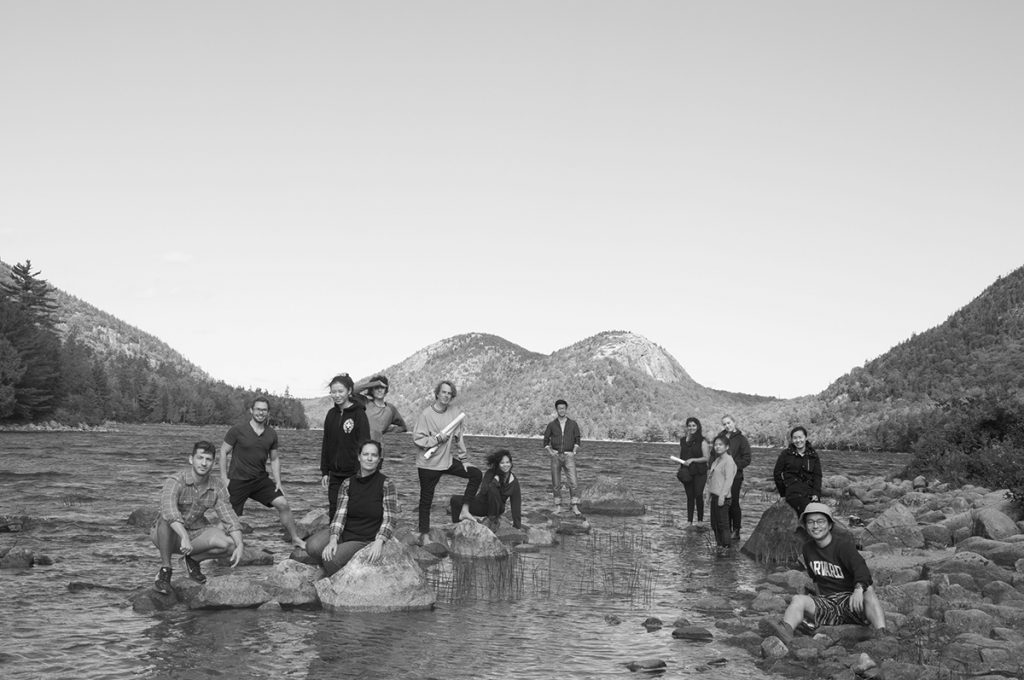
GSD: Why did you select Mount Desert Island, Maine, as the site of investigation for the Fall 2017 studio?
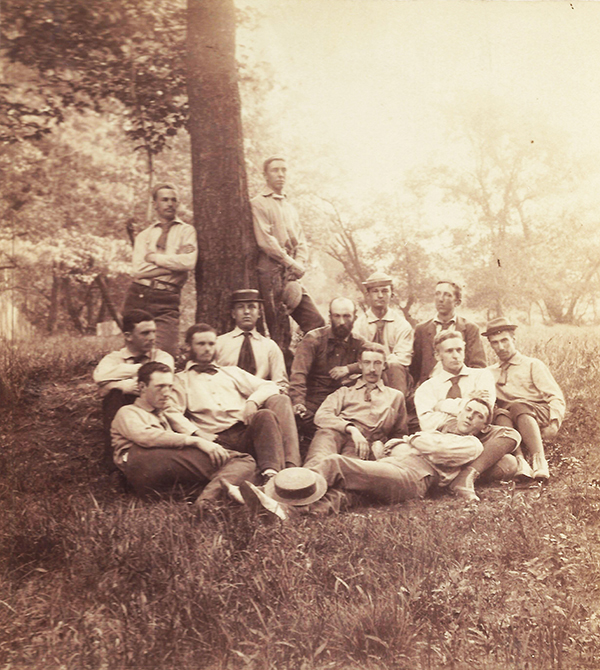
Champlain Society, 1881. Members would choose an academic specialty for the summer, such as collecting flowers for the botanical department or surveying geology.
BB and EH: There are several reasons why we selected Mount Desert Island as topic for our Fall 2017 studio. First, the rugged shaped island has a distinctive topography with its bare topped mountains rising out of the Atlantic. It has been dramatically shaped, folded, and carved by geological forces such as volcanic eruptions followed by the grinding erosion of numerous retreating ice caps. Geology is literally the bedrock of our profession; it exemplifies a world without beginning or end but in continuous transformation. Second, it was Mount Desert Island’s rugged shores and startling natural beauty that drew artists from the Hudson River School of Painting to Maine during the 19th century. They sought the Sublime in the sculpted surfaces, and recorded rocks, waves, and weather in order to evoke a sense of awe and majesty. Finally, we chose Mount Desert Island because of its very intriguing Harvard connection. In the 1880s, a group of Harvard boys created the Champlain Society, which organized yearly expeditions to study the Island. Each summer they roamed the Island like hyperactive squirrels, collecting and dissecting the wonders of the natural world in pursuit of scientific enquiry. Champlain Society members chose which specialty or department they would contribute to: collecting flowers for the botanical department, dredging for marine invertebrates, shooting birds for the ornithology department, recording the weather from their meteorological station, or surveying geology. Their ringleader Charles Eliot—son of Charles W. Eliot, President of Harvard from 1869-1909—became an influential landscape architect whose only flaw—according to landscape architect Ian McHarg (BLA ’49, MLA ’50, MCP ’51)—was to die prematurely of spinal meningitis at the age of 37. The early scientific enquiries of the Champlain Society can be regarded as forerunner to comprehensive regional planning. Interestingly we only found out recently that the one and only studio at Harvard led by McHarg, the godfather of landscape architecture, was situated on Mount Desert Island for exactly the very same reasons.
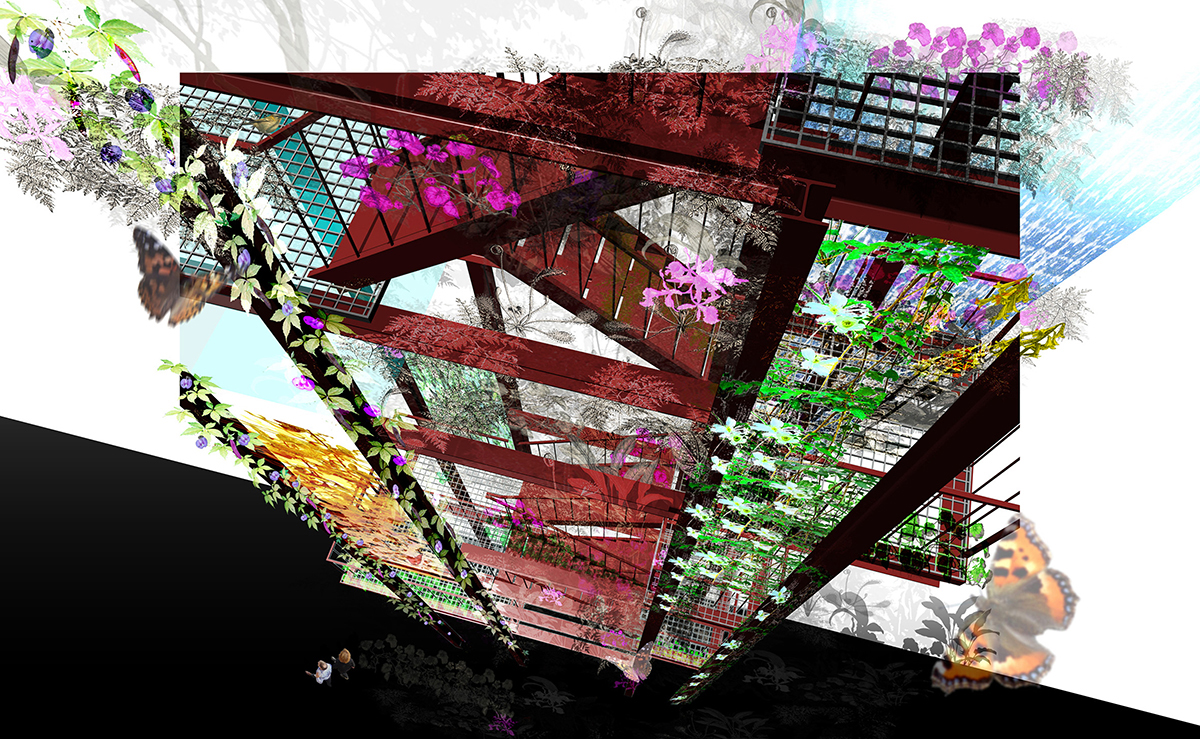
GSD: What do you hope students will take away from this course, and the others in the series?
BB and EH: A sense of curiosity.
GSD: What’s on your reading list/watch list/play list right now?
BB and EH: We recently stayed a week in a cottage designed by Marcel Breuer for the artist couple Gyorgy and Juliette Kepes in 1949. A modest marine plywood box at the Outer Cape floating above the landscape overlooking through a dense canopy of trees across the reflective mirror of an ancient kettle pond. Miraculously the cabin remains in original condition full of original art works, found objects, books, and catalogues. The house, its view, its contents was a truly integrated reading / watch / play list. Rilke, Kropotkin, Bachelard, Bartók, Moholy-Nagy, Le Corbusier, Wittgenstein and Cage, and many other friends and relatives rubbing each other at the endless bookshelves. It is amazing how many cross connections you can make by reading many books simultaneously in a heroic attempt to break the world record for book lifting.
GSD: Do you have a design hero? If so, who and why?
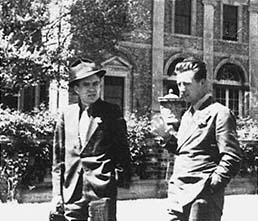
BB and EH: Yes, we have some design heroes as well as many design villains. For sure our point of return—our basecamp—is still the Modern Movement. Of course, we always quite like the obscure, the underdog, the odd one out. In fact, we like to rewrite the whole history of landscape architecture from this perspective. In terms of Harvard alumni we probably go for James C. Rose (GSD ’38) the James Dean rebel without a cause landscape architect who wrote a marvelous book with the wonderful tittle, Gardens Make Me Laugh. From our generation here in Europe, we really admire the relentless energy and wild collage illustrations by Yves Brunier who died of AIDS in 1991 at the age of 29.
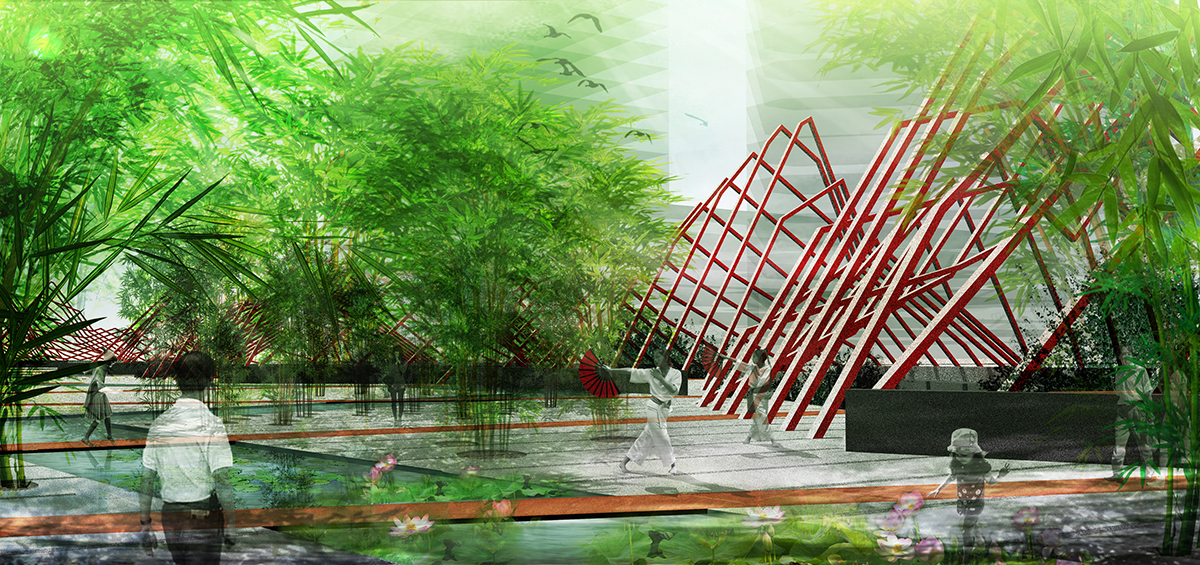
GSD: What role can design(ers) play in creating a more just, beautiful, and equitable world?
BB and EH: To create a more just and equitable world is the responsibility for all; it should be at the very core of our ethos and actions; it is a pre-requisite; how can we appreciate beauty without it? However, to create a more beautiful world is a disciplined task which requires the craft, skill, and talent specific to us as designers. It is our métier; it is our mission. We feel privileged to combine teaching and practice as we believe for us it is the best way to leave a small legacy towards a more just, beautiful, and equitable world. Ha, ha…each student a ‘seed bomb’ of ideas, carefully primed, ready to explode!
